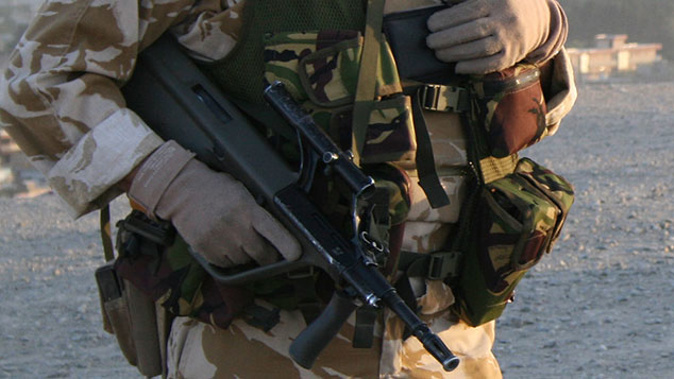
The book is called "Hit and Run".
It was released last night by authors Nicky Hager and Jon Stephenson -- two men who are accomplished journalists and well-researched on Afghanistan and conflict.
The book claims there's been a military cover-up about a raid on an Afghan village in 2010, which left six civilians dead and injured another 15. The official line was that nine militants were killed. Hager and Stephenson say that's not the case.
I want to read you a passage from the book which talks about the attack in Baghlan province. In involved our SAS and Afghan forces on the ground, and US support from the air.
This is from chapter four.
"Things were much worse inside the village. As families ran from their houses, they were shot at by the Apache gunships. 'Everyone was trying to get out of their houses and escape,' Deen said. The most concentrated fire was at three side-by-side houses owned by three brothers on the south side of the river. The helicopters rained down cannon fire and rockets, destroying the houses, injuring two of the mothers and five of their children and killing a sixth small child as she was held in her mother's arms. The father of the third household would be dead soon too."
The New Zealand Defence Force has said in a statement that allegations of civilian casualties were unfounded.
The question is, is there footage of this attack? And I would suggest there must be.
I travelled to Afghanistan to report twice during the conflict -- and a few months after this attack when I was in Kabul in 2011, I was taken to the International Security Assistance Force's Joint Command. It was the control and intelligence headquarters for the entire Afghan operation.
You can imagine what the security was like. I was ushered down hallways, past heavy security that guarded soundproof rooms, with heavily enforced doors bolted shut.
And then I came to a sort of auditorium and in front of me were two giant screens - the size of movie screens. And every military operation that was taking place across Afghanistan was beaming on to those screens. Satellites were tracking an American convoy travelling through a province. If anything went wrong, Joint Command could mobilise air support immediately. There were no planned operations taking place when I was there. I was a journalist, after all. The Americans wouldn't want me to see Afghans -- militants or otherwise - being gunned down, and this was at a time when George Bush was talking about winning the 'hearts and minds' of Afghans.
But what quickly became clear to me was that where an assault is planned, evidence is gathered. There is satellite footage. Gunships have cameras. Pilots are using powerful optics. And that's because with every operation comes the opportunity to gather further intelligence.
I have no doubt there will be footage of this operation. It shouldn't be made public. There is nothing to be gained from that. But in the right environment, an independent inquiry could surely access it.
Did the New Zealand Defence Force, as part of a joint operation, commit a war crime?
It's a horrifying thought, but the truth has to be established -- no matter how inconvenient that truth might be.
Take your Radio, Podcasts and Music with you









